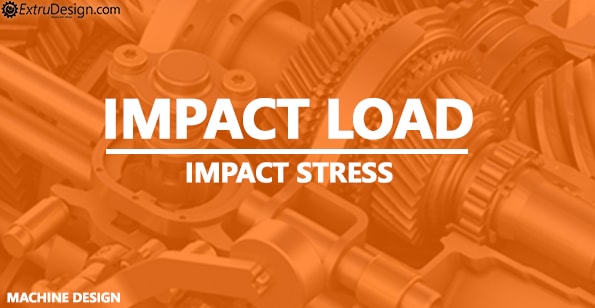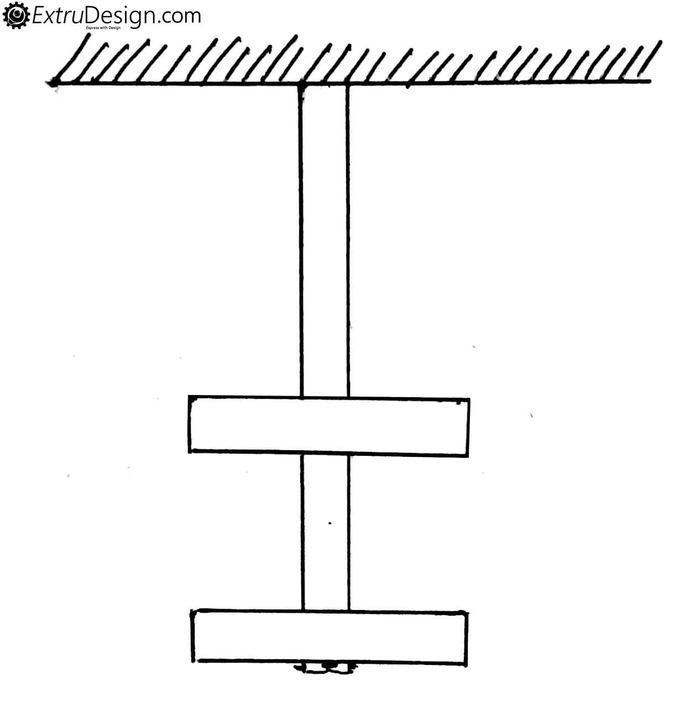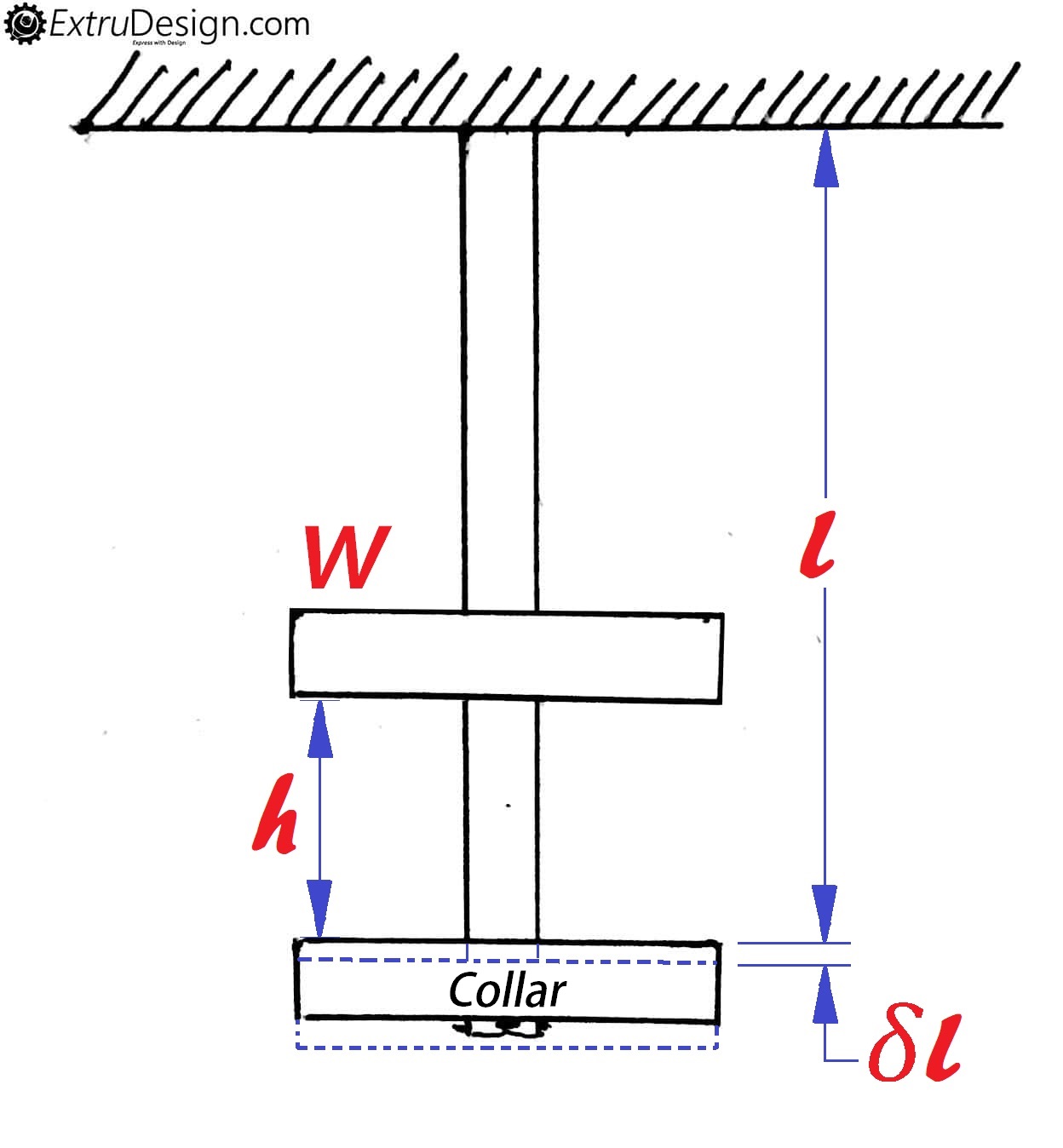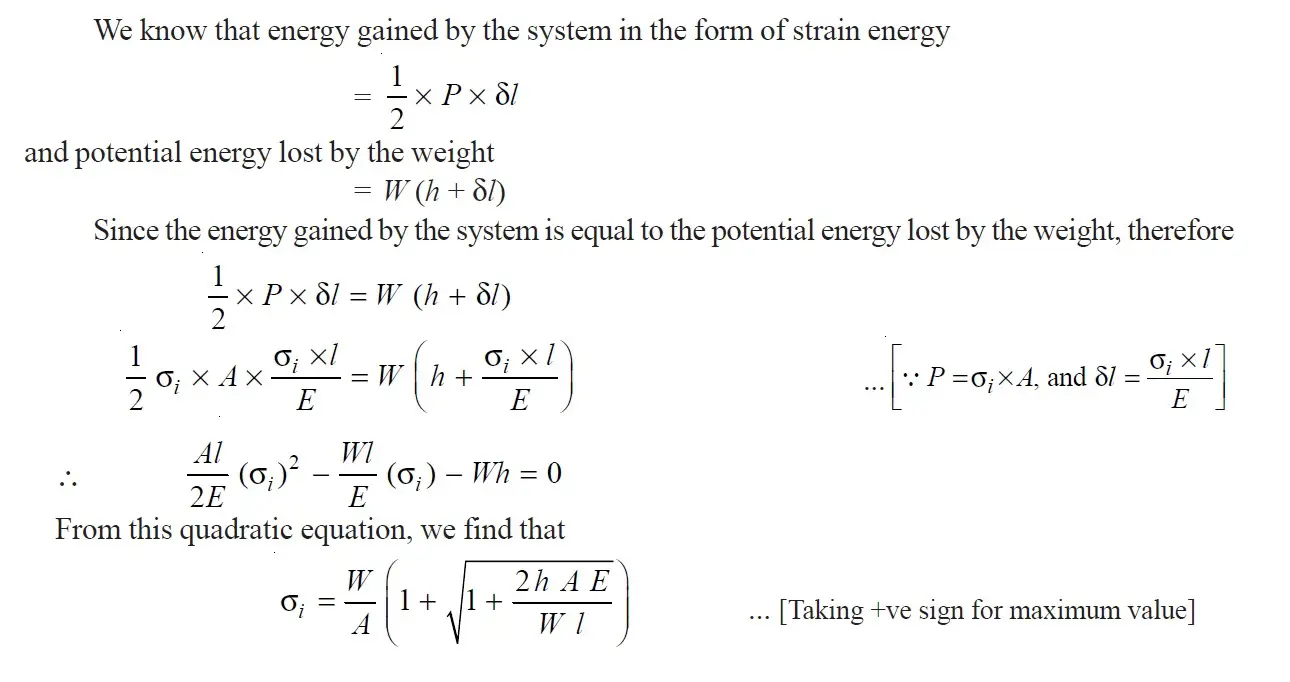Sometimes machine members are subjected to load with a sudden impact due to falling or hitting one object on another. The load produced due to these actions is known as the Impact load. The stress produced in the machine members due to the Impact load is known as the Impact stress. Let’s discuss this topic in a brief along with the Impact stress formula derivation.

Usually, there are two types of applying loads, one is gradually applied load and the second one is Suddenly applied/Impact load. As we said earlier an impact load is produced due to falling or hitting one object on another. With the following example, we can understand it in a better way.
Impact Stress due to Impact Load
 Consider a bar which is hanged to a rigid support as shown in fig and carrying a load of W at a height h and falling on the bottom plate called collar as shown in the animated gif.
Consider a bar which is hanged to a rigid support as shown in fig and carrying a load of W at a height h and falling on the bottom plate called collar as shown in the animated gif.
As the weight W fell on the collar which is fixed at the bottom of the bar, An impact load is produced on the collar, it leads the vertical bar to elongate. The deformation in the length of the bar is said as the 𝛿l. An impact stress is also induced in the Vertical bar which is represented by σi.
See the side animated gif, how an impact load will be produced and causes the elongation of the vertical bar and creates impact stress in it.
Impact Stress Formula Derivation

Let say
l = Length of the bar.
𝛿l = Deformation of the bar.
E = Young’s modulus of the material of the bar.
h = Height at which the load falls.
A = Cross-sectional area of the bar.
σi = Impact Stress-induced in the bar due to the application of the impact load.
P = Force at which the deflection is produced.
 Conclusion
Conclusion
σi = 2W/A ( ∴Where h = 0)
This means that the stress in the bar when the load is applied suddenly is double of the stress induced due to gradually applied load.
Source: Machine design textbook by R.S Kurmi.
 Conclusion
Conclusion
Hello,
Thank you for nice description.
What do you think about comparison of stress value when we compare staitc load applied to part and the same impact force applied to component. Which one will have higher stress ?
Glad you liked it.
And the comparison of the stress in the static loading and the Dynamic (Impact) Loading, The stress will be higher in the Dynamic loading.